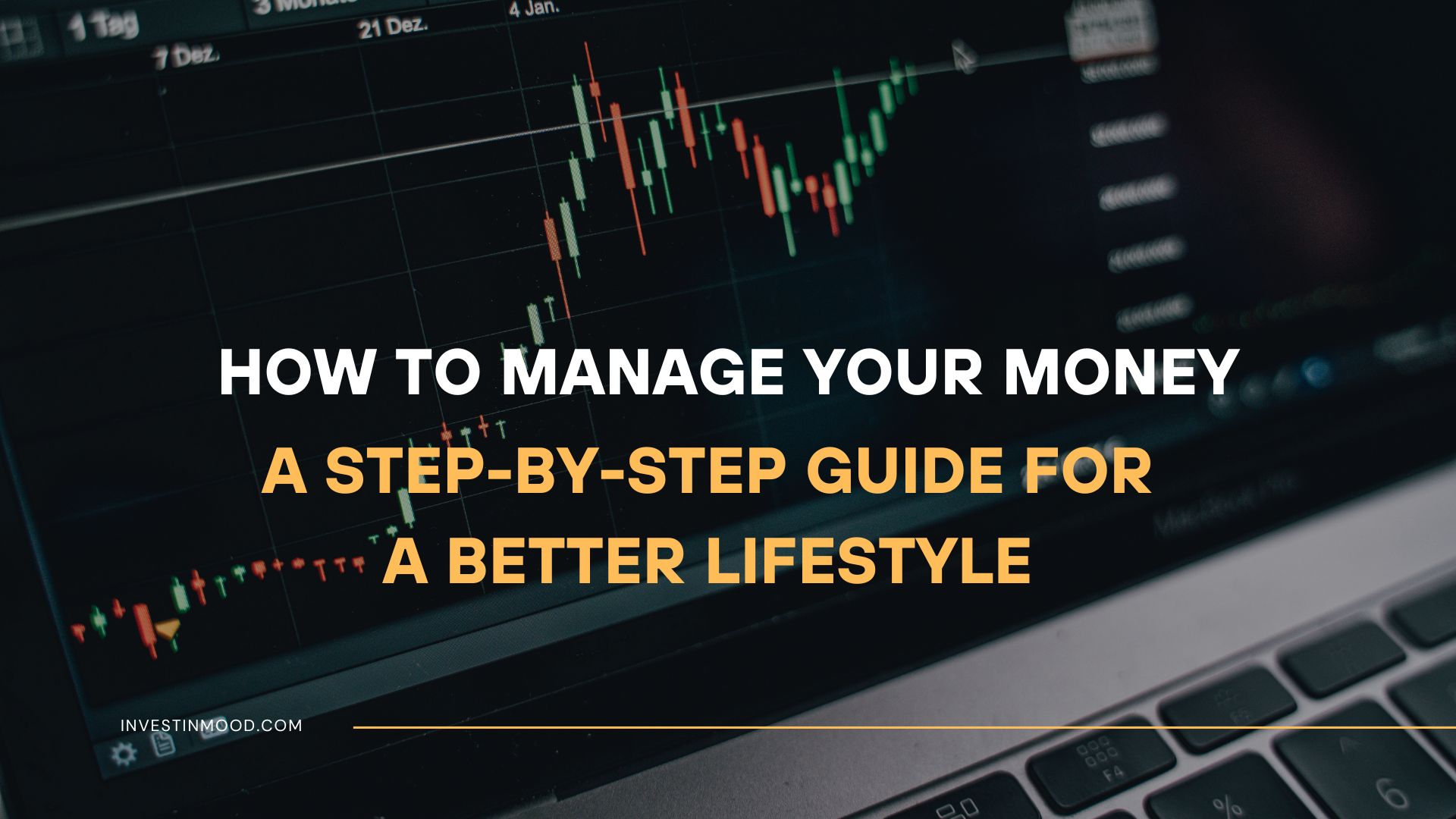
How to Manage Your Money Guide for a Better Lifestyle
Tired of living paycheck to paycheck and feeling stressed about your finances? Learning how to manage your money is the key to unlocking financial freedom and reducing anxiety. This step-by-step guide will walk you through the entire process, from tracking your spending to investing for your future, so you can build the lifestyle you truly want.
For individuals in the US, UK, and Canada, mastering these principles can help you navigate your specific financial systems, from 401(k)s and IRAs to ISAs and TFSAs, setting you on a path to long-term security.
Summary Table
| Aspect | Detail |
|---|---|
| Goal | To create a sustainable personal finance system that reduces stress, eliminates debt, and builds wealth. |
| Skill Level | Beginner to Intermediate |
| Time Required | 2-3 hours for initial setup; 30 minutes/week for maintenance. |
| Tools Needed | Spreadsheet (Excel/Google Sheets), your bank/credit card statements, a calculator. |
| Key Takeaway | Financial success comes from spending intentionally on what makes you happy, not from deprivation. |
<<<<<<<<<<<<<AD-PLACEMENT>>>>>>>>>>>>>>>>>
Why Learning to Manage Your Money is Crucial
Financial stress is a silent epidemic, impacting mental health, relationships, and overall life satisfaction. The problem isn’t that you don’t make enough money; it’s that you don’t have a system to manage your money effectively. This guide solves that by providing a clear, actionable framework.
The outcome? You’ll move from feeling controlled by your finances to being in command. You’ll know exactly where your money is going, have a plan to get out of debt, start building real wealth, and ultimately, use your money as a tool to design a better, more fulfilling lifestyle.
Key Takeaways
Visual Aid Suggestion for Section 3: An image showing the stark contrast between financial stress (e.g., a person looking anxious at bills) and financial freedom (e.g., the same person smiling while planning a vacation on a laptop). This creates an emotional hook.
<<<<<<<<<<<<<AD-PLACEMENT>>>>>>>>>>>>>>>>>
The Most Important Step: Your Money Mindset
Before any spreadsheet, you must address your beliefs about money. Your “money story”—formed in childhood—dictates your financial habits.
- Exercise: Identify Your Money Scripts: Ask yourself: What did my parents teach me about money? (“Money is the root of all evil,” “We can’t afford that,” “Rich people are greedy.”). Acknowledge these scripts and decide if they are serving you or holding you back.
- Shift from Scarcity to Abundance: Instead of thinking “I can’t afford this,” ask “How can I afford this?” This shifts your brain from a closed, fixed mindset to an open, problem-solving one.
- Actionable Tip: Read books like “The Psychology of Money” by Morgan Housel or “You Are a Badass at Making Money” by Jen Sincero to reframe your relationship with finances. [External Link to Amazon or a book summary].
What You’ll Need Before You Start
Before diving into the step-by-step budget process, let’s gather your tools. This will make the entire experience smooth and efficient.
- Knowledge Prerequisites: Basic arithmetic. A willingness to be honest with yourself about your spending habits.
- Data Requirements: Your last 3 months of bank statements and credit card bills. Recent pay stubs to know your exact take-home pay. Any information on your existing debts (balances, interest rates, minimum payments) and savings/investments.
- Tools & Platforms:
- Spreadsheet: Google Sheets (free) or Microsoft Excel. This is the most flexible tool.
- Budgeting Apps (Optional): Apps like Mint (being transitioned to Credit Karma) or YNAB (You Need A Budget) can automate tracking.
- A Calculator: Your phone’s calculator is perfect.
To easily pull and categorize your financial data, you’ll need a reliable budgeting tool. Many of the best personal finance apps, like YNAB or Empower (formerly Personal Capital), offer powerful tracking and net worth tools built into their platforms.
<<<<<<<<<<<<<AD-PLACEMENT>>>>>>>>>>>>>>>>>
Conduct a “Level 10” Financial Audit
Before building your new plan, you need a brutally honest snapshot of your current financial health. Rate yourself 1-10 on these pillars:
- Spending Awareness: (1=I have no idea where my money goes, 10=I track every dollar and categorize it).
- Debt Management: (1=I have growing high-interest debt, 10=I am completely debt-free, including my mortgage).
- Savings Security: (1=I have no savings, 10=I have a fully-funded 6+ month emergency fund).
- Investment Growth: (1=I have no investments, 10=I max out my retirement accounts and have a taxable brokerage account).
- Future Planning: (1=I have no will or insurance, 10=I have a comprehensive estate plan and adequate insurance).
This audit will clearly show you which areas need the most immediate attention in your financial life.
How to Manage Your Money: A Step-by-Step Guide
This is the main event. Follow these steps in order to build your financial foundation.
Step 1: Know Your Numbers – Track Your Income and Expenses
The first step in how to manage your money is understanding where it’s currently going. For one month, track every single dollar of income and every single dollar of expense. Categorize everything: housing, food, transportation, utilities, subscriptions, entertainment, etc.
Pro Tip: Use a debit or credit card for all purchases for one month to make tracking easier, as statements will automatically categorize most items. Then, you just need to review and adjust.
Visual Aid Suggestion: A screenshot of a Google Sheets spreadsheet or a budgeting app (like Monarch Money) showing a clean, categorized list of transactions for a single month. The image should highlight income at the top and various expense categories below.
Step 2: Create Your “Freedom Plan” – The Budget
Using the data from Step 1, create your first budget. Don’t guess—base it on your actual spending. The goal is to create a plan for next month’s income. A simple and effective framework is the 50/30/20 rule:
- 50% for Needs: Rent, groceries, minimum debt payments, essential utilities.
- 30% for Wants: Dining out, hobbies, shopping, entertainment.
- 20% for Savings/Debt: Emergency fund, investments, and extra debt payments above the minimum.
Common Mistake to Avoid: Creating an overly restrictive budget that you can’t stick to. It’s better to have a realistic, slightly imperfect budget than a perfect one you abandon in two weeks.
Visual Aid Suggestion: A simple, colorful pie chart or infographic clearly illustrating the 50/30/20 budget rule, with icons for each category (e.g., a house for Needs, a movie ticket for Wants, a piggy bank for Savings).
<<<<<<<<<<<<<AD-PLACEMENT>>>>>>>>>>>>>>>>>
Step 3: Build Your Financial Safety Net – The Emergency Fund
Before tackling debt aggressively or investing, you must build a buffer. This is your emergency fund—money set aside for unexpected expenses like car repairs, medical bills, or job loss. This fund prevents you from going into debt when life happens.
Goal: Start with a mini-goal of $1,000. Then, work towards a full emergency fund of 3-6 months’ worth of essential living expenses.
Example: If your essential expenses (needs) are $3,000 per month, your full emergency fund target should be between $9,000 and $18,000. Keep this money in a high-yield savings account, like those offered by Ally Bank or Marcus by Goldman Sachs, so it’s safe but still earns some interest.
Visual Aid Suggestion: An infographic showing a “Financial Security Ladder.” The bottom rung is “Track Spending,” the next is “Create a Budget,” and the highlighted third rung is “Build a $1,000 Emergency Fund,” with the top rung being “3-6 Month Emergency Fund.”
Step 4: Conquer Your Debt – The Debt Snowball/Avalanche
With a budget and a starter emergency fund, it’s time to attack your debt. High-interest debt (like credit card debt) is a major obstacle to wealth building. Two popular methods are:
- Debt Snowball: List your debts from smallest balance to largest. Pay minimums on all, but throw every extra dollar at the smallest debt. Once it’s paid off, roll that payment into the next smallest debt. This method provides quick psychological wins.
- Debt Avalanche: List your debts from highest interest rate to lowest. Pay minimums on all, but put all extra money toward the debt with the highest interest rate. This method saves you the most money on interest over time.
Visual Aid Suggestion: A simple, animated-looking flowchart comparing the Debt Snowball and Debt Avalanche methods side-by-side, showing the order of debt repayment for each.
<<<<<<<<<<<<<AD-PLACEMENT>>>>>>>>>>>>>>>>>
How to Use Your New Money Management System in Your Life
Knowing how to manage your money is one thing; living it is another. Here’s how to translate your plan into daily action.
- Scenario 1: You Get a Windfall (Tax Refund, Bonus): Don’t blow it all! Follow your plan. A good rule is the 50/50 rule: use 50% for fun/goals and put 50% toward your financial objectives (debt or savings).
- Scenario 2: You Overspend in a Category: Don’t panic and abandon the budget. Adjust. If you overspent on dining out, see where you can cut back in another “wants” category for the rest of the month to balance it out.
- Case Study: “Sarah tracked her spending and found she was spending $250/month on subscription services she barely used. By canceling them, she freed up $3,000 a year. She used this to fully fund her IRA, turning forgotten subscriptions into future retirement wealth.”
<<<<<<<<<<<<<AD-PLACEMENT>>>>>>>>>>>>>>>>>
Align Your Money With Your Life Goals
This is the “Better Lifestyle” part. A budget should fund your dreams, not kill them.
- Exercise: Define Your “Rich Life”: Imagine your life 5 years from now, where money is no obstacle. What are you doing? Where are you living? What does a perfect day look like? Write it down in vivid detail.
- Connect Goals to Budget Lines: Now, look at your “Rich Life” description. Does it involve travel? Then your “Travel” category should be well-funded. Does it involve a hobby? Fund it! Conversely, if your goal doesn’t involve having the latest car, you can drastically reduce your “Auto” budget.
- Actionable Tip: Create a “Dream Line” in your budget. Even if it’s just $25 a month, start funding something from your “Rich Life” list today. This creates a powerful, positive connection between your budget and your happiness.
Common Mistakes When Managing Your Money (And How to Fix Them)
- Pitfall 1: Not Automating Your Finances. Relying on willpower alone is a recipe for failure.
- Solution: Set up automatic transfers to your savings and investment accounts right after you get paid. This is the “pay yourself first” principle in action.
- Pitfall 2: Trying to Keep Up with the Joneses. Spending money you don’t have to impress people you don’t like.
- Solution: Define your own values and what a “better lifestyle” means to YOU. Focus your spending on those things and ignore external pressure.
- Pitfall 3: Having No “Fun Money” in Your Budget.
- Solution: A budget that feels like a prison will fail. Always allocate a reasonable amount of money for guilt-free spending. This makes the entire system sustainable.
- Reduces Stress Knowing where your money is going provides immense peace of mind.
- Creates Clear Goals It turns vague aspirations into actionable plans.
- Empowers You You can see exactly which spending habits are helping or hindering your goals.
- Improves Relationships Aligning on a budget with a partner can reduce money arguments.
- Requires Discipline It’s not a “set it and forget it” system and needs regular check-ins.
- Feels Restrictive Initially The first few months can feel constraining until you adjust.
- Life is Unpredictable Budgets need to be flexible to adapt to unexpected events.
<<<<<<<<<<<<<AD-PLACEMENT>>>>>>>>>>>>>>>>>
Taking Your Money Management to the Next Level
Once you’ve mastered the basics of how to manage your money, you can focus on optimizing and accelerating your wealth-building journey.
- Optimize Your Credit Score: A good credit score can save you tens of thousands of dollars over your life through lower interest rates on mortgages and car loans. Check your credit report for free at AnnualCreditReport.com and dispute any errors.
- Start Investing: Once your high-interest debt is gone and your emergency fund is full, it’s time to invest. Open a Roth IRA or contribute more to your employer’s 401(k). Low-cost index funds from providers like Vanguard or Fidelity are a great starting point for beginners.
- Consider a “Sinking Funds” Strategy: This involves saving small amounts monthly for predictable, non-monthly expenses like car insurance, holiday gifts, or vacations. This prevents these costs from wrecking your budget.
To make investing effortless, consider using a robo-advisor like Betterment or Wealthfront, which automatically builds and manages a diversified portfolio for you based on your goals and risk tolerance.
Conclusion
You now possess the fundamental framework for taking control of your finances and designing a better lifestyle. By following the steps to track, budget, save, and conquer debt, you’ve moved from being a passive observer to the active CEO of your financial life.
Remember, the goal isn’t perfection; it’s progress. Be mindful of the common pitfalls, celebrate your small wins, and stay consistent. Your financial future is built one monthly budget, one debt payment, and one automated savings transfer at a time.
How Budgeting Compares to Other Money Mindsets
It’s helpful to understand how a proactive budgeting system differs from other common approaches to personal finance.
| Feature | Proactive Budgeting | Reactive Spending |
|---|---|---|
| Mindset | “Tell my money where to go.” | “Wonder where my money went.” |
| Control Level | High, intentional. | Low, impulsive. |
| Primary Focus | Planning for future goals. | Reacting to past spending. |
| Stress Level | Low (once established). | High and constant. |
| Wealth Building | Systematic and likely. | Accidental and unlikely. |





